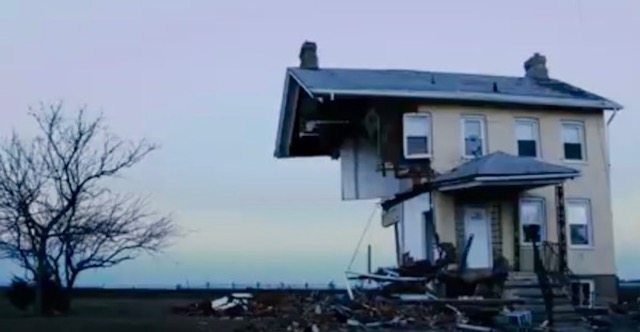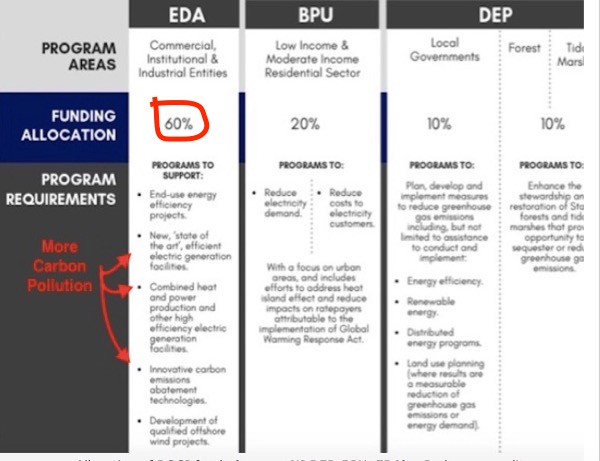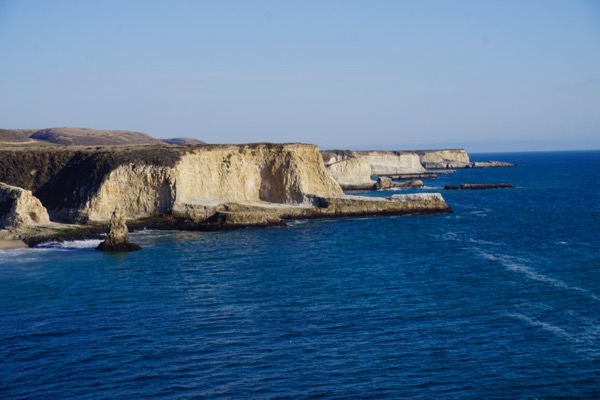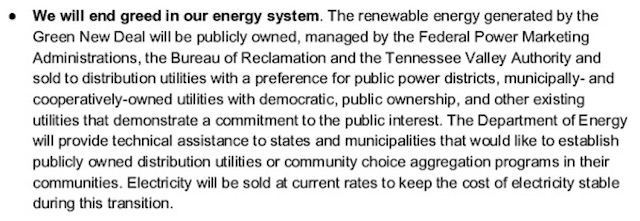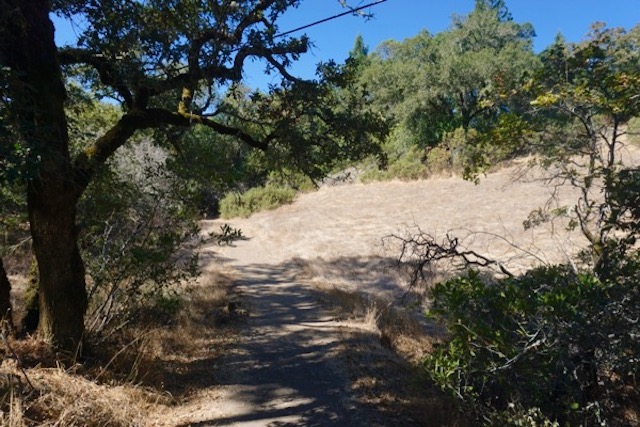NJ Gov. Murphy’s “Climate Resilience Strategy” Perpetuates The Status Quo, Misses Huge Opportunities To Make Real Change, And Undermines DEP Power
Hostages and Heavy Baggage In Hoboken
Yesterday, NJ Gov. Murphy issued Executive Order #89 and a press release. The Gov. held a press conference in Hoboken to announce his administration’s long overdue “Climate Resilience” initiative.
Once again, the Gov.’s rhetoric far surpasses the substantive reality of his policy.
But before we get to what the Gov.’s Executive Order actually does, let’s mention a few points on context and history, and describe what the Governor could have done, but failed to do.
In Part I today, we highlight the context, outline what the Gov. failed to do and describe some of the opportunities he missed. Part II (forthcoming soon) will analyze the Gov.’s Executive Order.
I) Past Is Prelude – Heavy Baggage In Hoboken
First of all, the choice of the city of Hoboken to announce the strategy and the naming of Dave Rosenblatt of DEP – Rosenblatt headed up DEP’s coastal engineering program for decades – as the “Chief Resilience Officer” is akin to a 2020 Democratic President Warren going to Tucson, Arizona to name Sheriff Joe Arpaio head of the US Justice Department’s Civil Rights Division.
That’s right – coastal engineering is to “resilience” what Arpaio’s practices are to justice.
They say that people and places are pillars of policy. For example, there was a reason that Ronald Reagan made a key speech in his 1980 Presidential campaign in Neshoba County, Mississippi.
Along those lines of symbolism, people, and policy, there’s a certain heavy baggage in Hoboken – that city was ground zero in Gov. Christie’s “Bridgegate” scandal.
How could people forget THIS? (especially at a time when Trump is under impeachment inquiry for a political quid pro quo – as The New Yorker wrote in “A Hostage To Christie In Hoboken?”:

“The bottom line is, it’s not fair for the Governor to hold Sandy funds hostage for the City of Hoboken because he wants me to give back to one private developer,” Mayor Dawn Zimmer told Steve Kornacki, of MSNBC, this weekend. By Sunday, she said she was meeting with the United States Attorney’s office, showing them diary entries and other notes she made last May.
Hoboken and DEP’s Dave Rosenblatt are also core elements of and Christie’s failed post-Sandy “rebuild madness” strategy.
Surely Gov. Murphy and DEP Commissioner McCabe must know this.
Surely they must know that their chosen “Chief Resilience Officer” Dave Rosenblatt was DEP’s point person in dealing with former Gov. Christie’s “Sandy Redevelopment Czar” Marc Ferdan.
Surely they must know that Dave Rosenblatt was involved in the Hoboken Mayor Zimmer – Rockefeller Development scandal and was interviewed by the Mastro Report.
Surely they must know that Dave Rosenblatt has spent a 30+ year career in the trenches of DEP’s coastal engineering program. During that time, he has shown zero leadership or vision – a yes man – while supporting and cheerleading for fatally flawed (literally) coastal engineering policies, plans, regulations and projects that greatly increased NJ shore vulnerability and magnified the disastrous impacts of Sandy (see: “A Dirge To McHarg”).
Surely they must know that Dave Rosenblatt’s daughter Jane is Commissioner McCabe’s chosen “Deputy Chief of Staff” – a position she clearly is not qualified for by education and experience – making the administration highly vulnerable to a nepotism charge.
Hoboken and Rosenblatt are toxic – their selection demonstrates either gross incompetence or cowardice, or possibly lack of commitment or even intentional sabotage.
And the NJ press corps (that’s you Michael Aron) and the NJ environmental community surely know all this too – the fact that they unconditionally praised the Gov. and failed to mention any of this illustrates how craven and cowardly they’ve become.
II) Missed Opportunities – What Gov. Murphy Failed To Do
The climate emergency justifies major structural policy change – what the Gov. likes to call “transformational change” – not incremental reforms.
So let us consider whether the Gov.’s Executive Order measures up to the climate emergency.
First of all, the Gov. did not use his Constitutional Executive Power to declare an emergency.
The Gov. did not use his Constitutional power to declare a moratorium on DEP approvals of new development, redevelopment, or infrastructure construction in high hazard areas until the legislature acts to restrict such development and DEP adopt an enforceable plan and protective regulations.
The Gov. did not use his Executive powers to establish and articulate a policy and direct his administration to implement that policy and seek legislation to implement that policy..
Other NJ Governor’s – including Governors Byrne (Pinelands Protection Act), Kean (Freshwater Wetlands Act), Florio (garbage incineration), Whitman (Water Quality Management Planning rules – sewers) and McGreevey (Highlands Act) have used such executive powers to extract major legislative concessions and drive DEP planning and regulatory reforms.
The US Supreme Court has upheld such temporary moratoria pending development of a regional land use plan and adoption of implementing regulations (see:
- Tahoe-Sierra Preservation Council, Inc. v. Tahoe Regional Planning Agency, 535 U.S. 302 (2002)
The Gov. failed to direct DEP Commissioner McCabe to aggressively use her existing regulatory authority under NJ’s federally delegated Coastal Zone Management Act, Clean Water Act, and extraordinary Hazard Mitigation Plan powers.
The gov. failed to withdraw his DEP’s fatally flawed stormwater rule, that FEMA criticized, and directed DEP to re-propose a rule that reflects science, but he didn’t.
The Gov. failed to even coordinate with interstate regional bodies like the Delaware River Basin Commission and Interstate Sanitation Commission or adjacent state’s like NY, that are far ahead of NJ.
The Gov. failed to direct DEP Commissioner McCabe to aggressively use her existing regulatory and planning powers under NJ’s State Coastal Area Facility Review Act (CAFRA) or Water Quality Planning Act or direct actions under the Pinelands Act/Commission, Highlands Act/Council or Hackensack development law.
The Gov. didn’t even integrate his “Climate Resilience” initiative with his Energy Master Plan process being led by BPU.
Recall that DEP and Rutgers – and many others – have issued numerous Reports which identify specific DEP regulatory weaknesses and gaps and have made specific reform recommendations to strengthen regulations. If DEP Commissioner McCabe and Gov. Murphy would even read NJ federally mandated DEP’s “Coastal Zone Section 309 Assessment and Strategy – 2016 – 2020″ (see p. IV-28), they would and this:
New Jersey Climate Adaptation Alliance
Resilience: Preparing New Jersey for Climate Changehttp://njadapt.rutgers.edu/docman-lister/resource-pdfs/73-njcaa-gap-analysis-final-pdf/file
This report is a step toward developing policy recommendations to enhance climate change preparedness in New Jersey. It summarizes key gaps identified to date through a stakeholder outreach process. It provides context regarding New Jersey’s changing climate and vulnerabilities.
The Gov. ignored all this and treats these issues as if he invented the wheel – and a toothless one at that.
The Gov. failed provide his “Chief Resilience Officer” with any administrative powers or a specific charge to focus on CAFRA Coastal planning and DEP regulatory powers. CRO Rosenblatt reports to DEP Commissioner McCabe and has no power on the InterAgency Council on Climate Resilience created by Murphy’s Executive Order #89. He’s not even Chair of that Council and the Council has only advisory powers.
Recall that Gov. Christie appointed “Sandy Redevelopment Czar” Marc Ferdan and gave him real powers – including an equivalent cabinet role and access to the Governor and budget authority. CRO Rosenblatt lacks any of these formal and administrative powers.
Recall that the legislature considered a bill to create a Coastal Commission – Gov. Murphy could have revived that proposal, but he didn’t.
Recall that the legislature considered a bill to create a “Catastrophic Fund” – Wall Street savvy Gov. Murphy could have revived that proposal, but he didn’t.
Recall that the legislature considered a bill to mandate that DEP update the State Coastal Protection Plan, which is implemented and enforced by DEP regulations – but he didn’t.
The Gov. could have announced a “one and done” policy and that he was seeking legislation to repeal the “right to rebuild” provisions under NJ coastal CAFRA and Flood Hazard Acts, which lead to filing multiple damage claims on the same property and rebuilding in high hazard areas, an abuse that NJ leads the nation on. But he didn’t. The Gov. is cluelessly unaware of his own DEP’s Section 309 Report on this issue: (see p. IV-28)
Repetitive Loss
According to the National Flood Insurance Program’s Claim Information by State report (http://bsa.nfipstat.fema.gov/reports/1040.htm) of November 30, 2014, New Jersey recently passed Texas as the second highest ranked state in FEMA total loss payments with $5,622,667,976.21 in losses. New Jersey is the fourth highest ranked state in the total number of losses at over 188,000.While these losses are not limited to New Jersey’s coastal zone, the statistics are indicative of the increasing risks to natural hazards.
In addition to no substantive policies or regulations, the Gov. made no commitment to funding or staffing the resilience program.
But, most importantly, the Gov. could have established a policy of “Strategic Retreat” – which DEP’s Coastal Zone Strategy has recommended for 20 years – but he didn’t.
Instead, Murphy’s EO89 is all process and no policy or legal substance and no resources (financial or human).
So, there is really no excuse for the Gov. to not pull any of these powerful & mandatory triggers – the fact that he hasn’t demonstrates that he is either too politically weak to take on the fight with developers, local governments, the business community, and his own party – or insincere – or grossly incompetent and poorly advised (that means you Catherine McCabe!)
